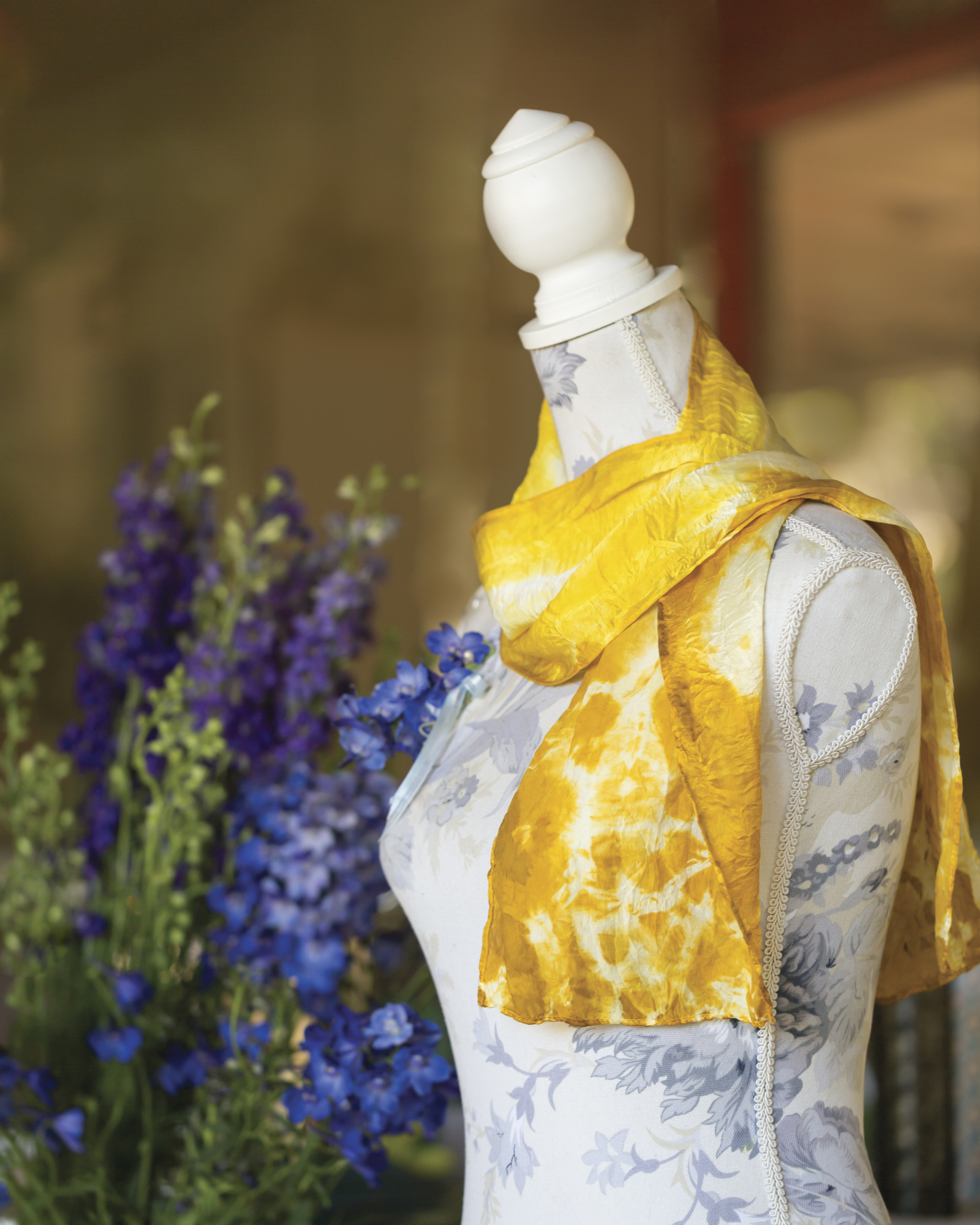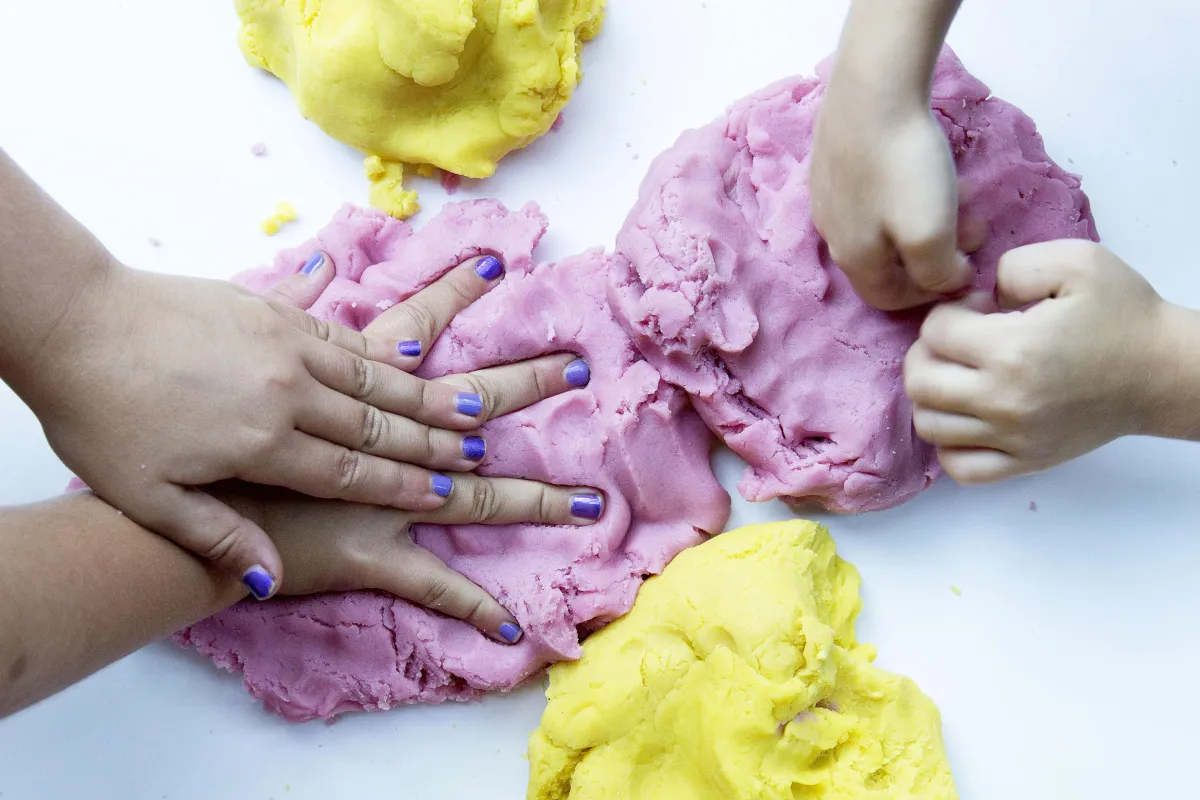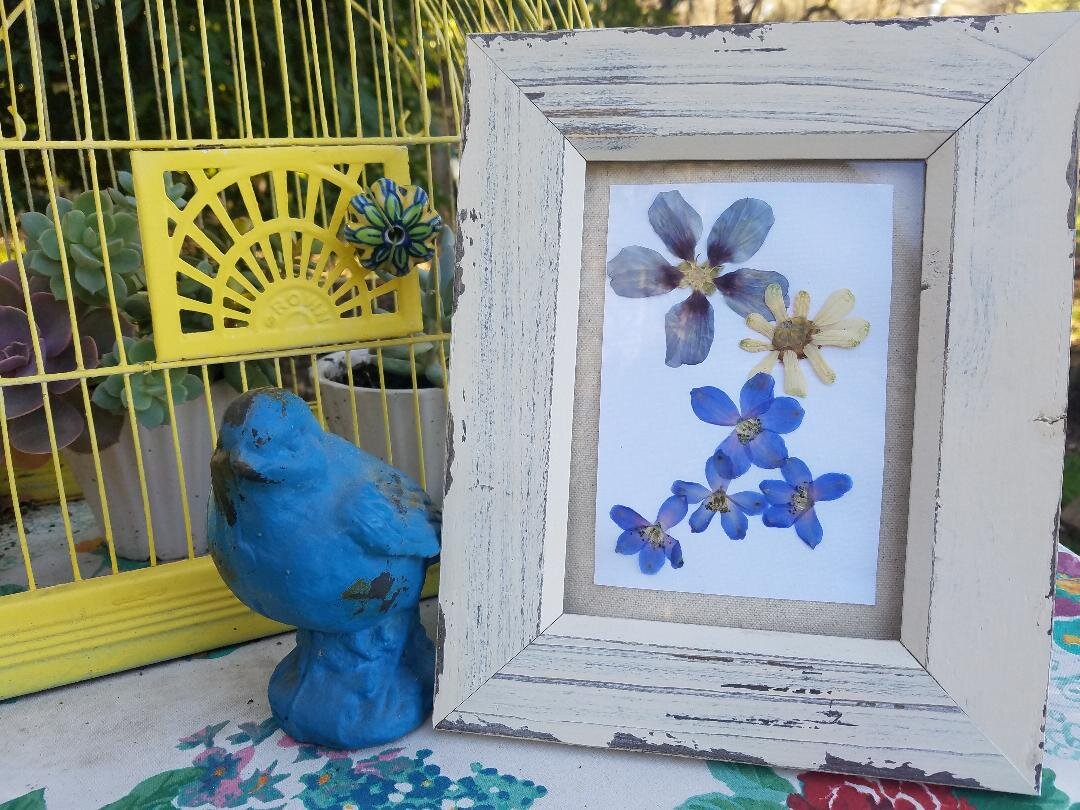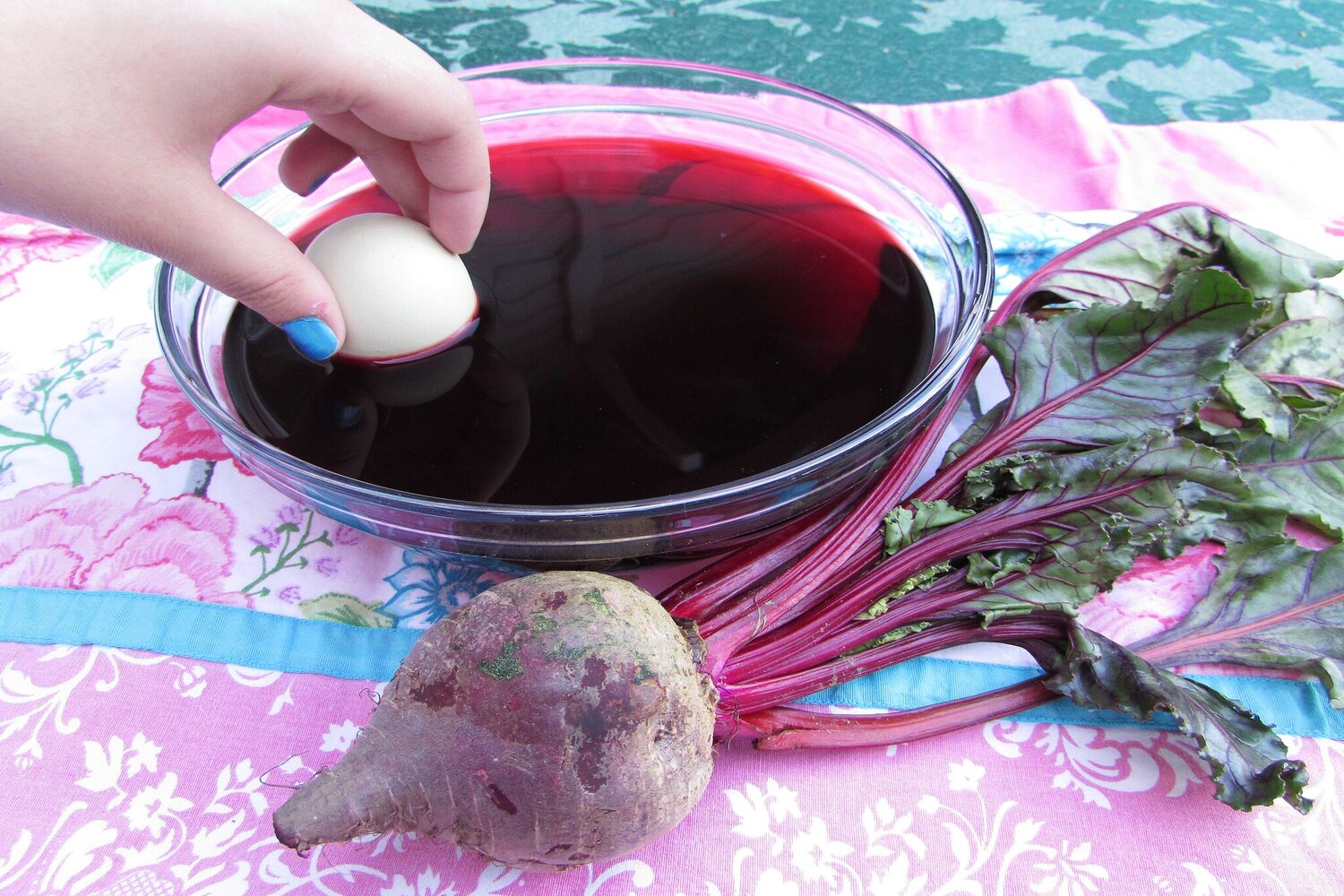Marigolds produce vibrant yellows that are easy to extract and bond beautifully to natural fibers. Natural dyes work best on fibers that come from plants or animals—like silk, hemp, bamboo, linen, wool, mohair, and angora (from rabbits). In this tutorial, we’ll focus on dyeing a uniquely beautiful fashion scarf using fresh (or frozen) marigolds.
Step 1: Gather Your Marigolds
Step out into the garden and snap off a bunch of marigold heads—fresh flowers are great, but don’t worry if you don’t have enough all at once. You can also deadhead faded blooms and toss them into a Ziploc bag in the freezer until you’ve saved up enough.
How much do you need?
As a general rule, aim for at least the same weight in plant material as your fabric (a 1:1 ratio). So if your scarf weighs 50 grams, gather around 50 grams of marigolds.
Step 2: Gather Your Tools and Materials
Here’s what you’ll need:
- Water (your kitchen sink is perfect)
- Silk scarf (mordanted if desired—more on that below)
- Fresh or frozen marigold petals or whole flower heads
- 2 stainless steel pots with lids
- A glass or plastic bowl
- Mesh strainer
- Stainless steel tongs
- Stove or heat source
What Is a Mordant—and Can I Skip It?
Mordants help natural dyes “stick” to fabric. They can be metallic (like alum) or plant-based (like tannins). With marigolds, you can often skip this step—marigold dye naturally grabs onto silk and other natural fibers really well. That said, I personally prefer to mordant everything I dye. It deepens the color and helps it last longer. So if you’ve already mordanted your scarf, great! If not, you’ll still get beautiful results without it. Here’s how to mordant your silk if you choose to do so. If you’d like to skip this part, feel free to scroll on down to Step 4!
Step 3: How to Mordant Your Silk Scarf
Mordanting helps natural dyes stick better and last longer, especially after washing. Here’s how to mordant your silk scarf using alum and cream of tartar—both easy to find at the grocery store.
Weigh Your Fabric
Start by weighing your dry silk fabric. You’ll need:
- 10%–20% of that weight in alum (potassium aluminum sulfate)
- The same amount of cream of tartar (optional, but helps brighten the final color)
Example: If your scarf weighs 100 grams, you’ll use 10–20 grams of alum (about 1–2 tablespoons), plus 10–20 grams of cream of tartar if you’re using it.
Gather Your Materials
- Silk scarf (or scarves)
- Alum (potassium alum sulfate)
- Cream of tartar (tartaric acid) — optional
- Measuring cup or small mixing bowl
- Stainless steel pot
- Stove
- Water source (kitchen sink)
- Tongs
Tip: Both alum and cream of tartar are often found in the spice aisle of your grocery store.
Prep the Pot
- Fill your stainless steel pot with enough water for the fabric to float freely.
- Add your silk scarf to the pot right away—this lets the fabric gradually warm up with the water.
Dissolve the Mordants
- In a measuring cup, dissolve the alum (and cream of tartar, if using) in a small amount of warm water.
- Pour the dissolved mixture into the pot with the silk.
Heat and Simmer
- Turn the heat to medium and slowly bring the pot to a gentle boil.
- Once it reaches boiling, immediately reduce the heat to a low simmer.
- Let the scarf simmer gently for about 1 hour.
Cool Down
- Use tongs to lift the scarf out of the pot, letting the liquid drip back in.
- Place the mordanted scarf into a glass or ceramic bowl (something non-reactive) to cool.
- Let it rest until it’s cool enough to handle—or until you’re ready to dye!
Reuse tip: You can save the mordant bath and reuse it once or twice more if you like.
Now ~ Onto the dye bath!
Step 4: Make Your Dye Bath
- Fill a pot with enough water to submerge your fabric later. Add your marigold flowers (petals or whole heads).
- Bring to a gentle simmer—not a rolling boil—over medium heat.
- Let the flowers simmer for 30–45 minutes, or until the water turns a rich golden yellow.
- Once the color looks strong, remove from heat and let the dye bath cool slightly.
- Strain out the flower material using a mesh strainer, and transfer the dye liquid into a clean pot (or the same pot, cleaned out).
Step 5: Dye the Scarf
- Pre-wet your scarf in cool water so it soaks evenly.
- Add the damp scarf to the dye bath and slowly heat it again—this time keeping it at a gentle simmer for 30–60 minutes.
- Stir occasionally with tongs to help the color absorb evenly.
- Once you’re happy with the color (it will dry slightly lighter), remove the scarf and let it cool.
Step 6: Rinse and Dry
- Rinse your scarf gently in cool water until the water runs clear.
- Hang it up to air dry away from direct sunlight (this helps preserve the color).






